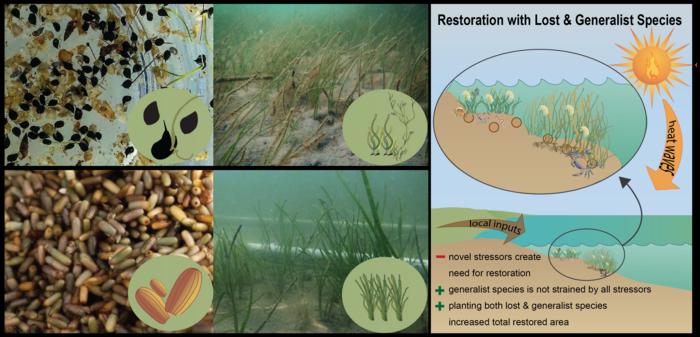Holistic Approaches to Combat Radiation-Induced Restrictive Cardiomyopathy
Radiation therapy has become a cornerstone in the management of malignancies, especially those located within the thoracic region. However, with the increasing use of such therapies, a significant clinical yet often overlooked challenge has arisen: radiation-induced cardiomyopathy (RIC). As patients undergo treatments that target cancers in the chest, their hearts are inadvertently exposed to radiation, […]


Radiation therapy has become a cornerstone in the management of malignancies, especially those located within the thoracic region. However, with the increasing use of such therapies, a significant clinical yet often overlooked challenge has arisen: radiation-induced cardiomyopathy (RIC). As patients undergo treatments that target cancers in the chest, their hearts are inadvertently exposed to radiation, increasing the likelihood of cardiovascular complications. Recent research highlights the crucial need to understand the mechanisms behind RIC and implement effective management strategies.
Recent advancements in radiation therapy techniques have transformed traditional methods that often posed higher risks to cardiac health. Newer modalities like 3D conformal radiation therapy (3D-CRT), intensity-modulated radiation therapy (IMRT), volumetric modulated arc therapy (VMAT), and proton therapy have significantly minimized cardiac exposure during cancer treatment. These innovations are not merely technological updates; they represent a paradigm shift in oncology, where the collateral damage to vital organs, notably the heart, is meticulously considered, thus enhancing patient safety and treatment efficacy.
An essential aspect of mitigating RIC lies in the application of additional protective measures that healthcare practitioners can employ during radiation therapy. For instance, multileaf collimation (MLC) serves to create customized radiation fields to shield vulnerable structures, reducing the heart’s exposure to ionizing radiation. The utilization of patient positioning, such as placing patients in a prone position during therapy, further assists in protecting the heart from radiation dose. Additionally, adopting the deep inspiration breath-hold (DIBH) technique helps to displace the heart away from the radiation field, thereby minimizing potential damage.
However, even with technological advancements and improved practices, the risk of developing RIC does not disappear. As such, post-therapy cardiac screening becomes imperative. Regular monitoring can facilitate early detection and timely intervention for any signs of cardiovascular impairment. Research supports the notion that proactive cardiac evaluation allows healthcare providers to initiate necessary treatments promptly, which may improve patient outcomes significantly.
In the quest to understand and counteract RIC, the role of oxidative stress induced by radiation has been increasingly scrutinized. Radiation exposure leads to the generation of reactive oxygen species (ROS) that inflict damage at the cellular level, leading to inflammation and subsequent cardiac muscle dysfunction. In light of this, specific antioxidant interventions have garnered attention in recent studies as potential preventative measures against RIC. Notable among these are statins and angiotensin-converting enzyme inhibitors, which exhibit inherent cardioprotective properties.
Moreover, the exploration of herbal supplements known for their antioxidant capabilities presents an alternative approach to safeguarding cardiac health in patients undergoing radiation therapy. These natural products have shown promise in research settings, suggesting they may help mitigate radiation-induced oxidative damage. The integration of these agents into a comprehensive management strategy could enhance patient care and improve quality of life during and after cancer treatment.
In their newly published review article, Mohannad Al Akeel, Shahnawaz Notta, and Ward Al Akeel delve into the pathophysiology of RIC, clinical implications, and effective management strategies. Their work not only collates existing knowledge but also outlines future directions for research and practice in this critical area. Their findings advocate for enhanced awareness among oncologists and other healthcare professionals regarding the potential risks posed by radiation therapy and the subsequent need for cardiovascular strategy implementation.
Innovative approaches in RIC management are critical as the cancer treatment landscape evolves. Future studies should focus on longitudinal evaluations of patients subjected to various radiation techniques, assessing the long-term cardiovascular consequences associated with each method. This research is vital not only for developing targeted therapeutic interventions but also for refining radiation therapy protocols to prioritize patient safety without compromising treatment effectiveness.
As the medical community continues to unravel the complexities of RIC, ongoing education and collaboration among oncologists, cardiologists, and researchers are paramount. A multidisciplinary approach will foster a deeper understanding of the interconnections between cancer treatments and cardiovascular health, establishing protocols that anticipate and address potential complications effectively.
The integration of systemic monitoring and a timely response to emerging cardiovascular issues among cancer survivors will play a crucial role in shaping the future of radiotherapy. Recognizing the pathophysiological links between radiation exposure and cardiac alterations holds the key to enhancing survivorship and reducing morbidity rates among affected populations.
In conclusion, advancing treatment techniques and awareness regarding radiation-induced cardiomyopathy herald a new paradigm in oncology. By focusing on holistic patient care, including diligent cardiac monitoring and innovative protective strategies, the medical community can endeavor to mitigate the adverse impacts of cancer therapy on heart health. As researchers continue to explore therapeutic alternatives and refine existing interventions, the ultimate goal remains clear: to enhance patient outcomes and ensure that those who undergo cancer treatment are afforded both effective care and a promising future.
Subject of Research: Radiation-induced cardiomyopathy and its management in patients undergoing thoracic radiation therapy.
Article Title: Comprehensive Strategies to Address Radiation-Induced Restrictive Cardiomyopathy
News Publication Date: 2025
Web References: Cardiovascular Innovations and Applications, ScienceOpen
References: DOI: 10.15212/CVIA.2024.0058
Image Credits: Not provided.
Keywords: Radiation therapy, radiation-induced cardiomyopathy, cancer treatment, cardioprotection, oxidative stress, antioxidants, post-therapy screening.
Tags: 3D conformal radiation therapy benefitsadvancements in radiation therapy techniquescardiovascular complications from radiationholistic approaches for heart healthintensity-modulated radiation therapy innovationsminimizing cardiac exposure during cancer treatmentmultileaf collimation in radiation therapypatient safety in oncology treatmentsprotective measures in radiation therapyproton therapy for cancer treatmentradiation-induced cardiomyopathy managementvolumetric modulated arc therapy advantages
What's Your Reaction?

































